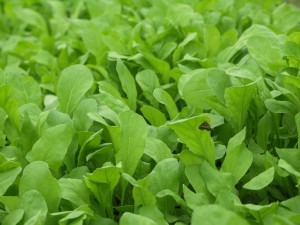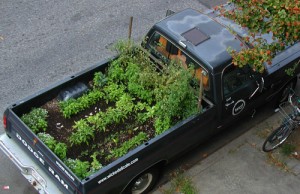A reader in North Carolina posted this comment last week:
Love the articles! I’m buying a house and will finally have a yard to start a garden. I’d love to get your opinion on the best times of the year to plant certain foods and some that would be easier for a first time gardener.
Thanks!
So we’re going to oblige. Because we’re cool like that. And believe that if you have the means to buy a house, you most definitely should rock a garden in the backyard.
The best way to find out what plants will succeed when planted mid-Summer is to check with a local plant nursery or find region-specific info on the internet. Since a plant’s suitability to your garden depends significantly on the temperature and on frost, the answer to your question varies depending on where you live.
Also, a good rule of thumb for less experienced gardeners is to buy seedlings, rather than seeds, to plant. Doing this will give you an added advantage in that you’ll save time that you don’t want to spare since we’re already well into the season.
So, some recs…
Tomatoes! Good, homegrown, heirloom tomatoes are about the best thing you’ll ever taste. They typically take up to two months to produce fruit, but if you pick up some seedlings at a nursery and get them into the ground, you’ll probably be able to start harvesting by mid-September, only about a month beyond when the “normal” tomato crop comes in. The plants will keep producing well into Fall; I routinely continue to harvest tomatoes in Brooklyn in mid-October.Tomatoes are good for less experienced gardeners as well because they possess a rare trait that gives you an edge on keeping them alive. The branches from a seedling, if buried when you transfer the seedling from the nursery pot to the ground, will sprout their own roots. You can essentially double the number of roots of your plant, which will make it heartier and better able to withstand the heat and the chill.
Plant tomatoes in full sun and water, water, water. Once plants start fruiting, most of that water goes directly to the tomatoes. The more you water, the bigger your ‘maters.
Basil loves being freed from the pot folks usually grow it in, and it shouldn’t matter that you’re not getting them into the ground until mid-Summer. They’re a great companion plant to tomatoes, both on a plate and in the garden, and they’ll become positively huge if they’ve got the space.
Pinch off the flowers whenever they appear, and harvest the big leaves to keep the little ones coming. I once made a basil plant grow big and long enough that its stem became almost woody, and the leaves were still great.
Growing basil is also great because you can make pesto incredibly easily, and it stores well in the freezer. You can build a stock of fresh pesto to enjoy in the winter time, and the cooking effort and planting experience are very, very minimal.
Awesome salad greens like arugula and mesclun—as well as more common varieties like red leaf and bib—like chilly weather. This is makes them great options for folks who aren’t able to start their gardens in the spring. Lettuces seeds looking to sprout generally like temperatures from the mid- 50s to the mid-70s Fahrenheit, so if Mitch’s home in North Carolina is anything like New York, the world is too hot at the moment.
50s to the mid-70s Fahrenheit, so if Mitch’s home in North Carolina is anything like New York, the world is too hot at the moment.
But if you lay out your garden to accommodate greens you’ll plant later on, you’ll be rewarded. Get yourself the seeds now (they’re so cheap and so plentiful that you can make these, rather than seedlings, work) while hardware stores are still selling seed packets, and then sow them come early September or whenever the heat has reliably dipped below scorching. If you put a cold frame over these greens, you can keep harvesting them into the wintertime. So long as frost doesn’t get to the leaves, you’re probably good to go up into December or further.
Super-nutrient greens like Kale, Swiss Chard, and Spinach are cold weather crops, too. You can either start them in early Spring or Fall, whenever the temperature reliably stays below 80 degrees, so leave space open to plant them come September. They will each continue to produce into late Fall, and, if you protect them from frost, into winter.
Bell Peppers, if you buy them as seedlings and them set them in the ground, should start producing relatively quickly even when started in July.


Pingback: Goodness Grows Speedwell Veronica | Landscaping - Gardening